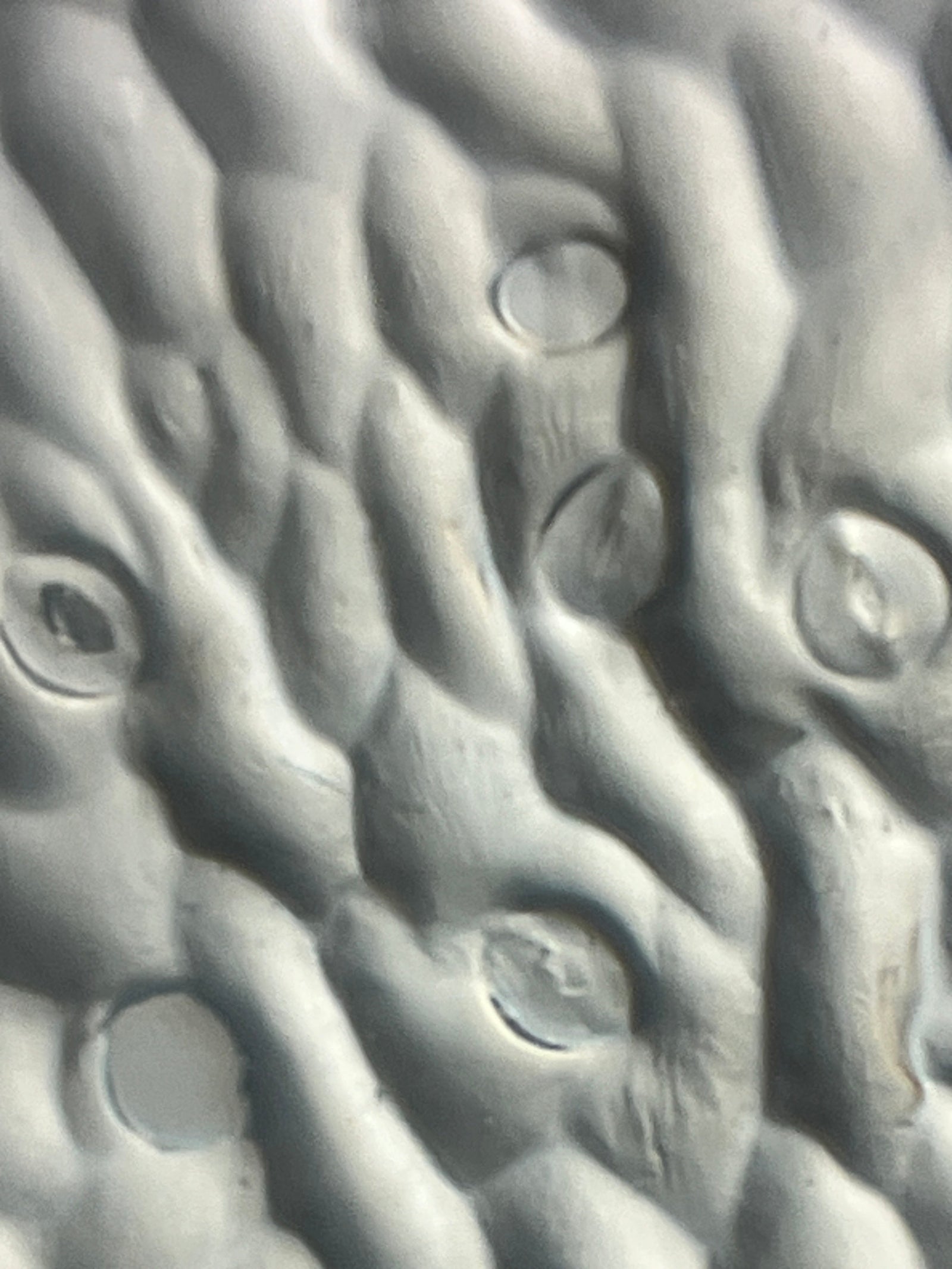Question:
Are bubbles always round?
In the Northern Hemisphere, June marks the beginning of summer. This means warm weather, no school, and lots of time to blow bubbles! As you watch bubbles floating away, do you ever ask yourself about the shape of bubbles? Let’s answer this question as we take a closer look at bubbles with our Foldscopes!

Background:
Bubbles are formed when gas gets trapped inside of a liquid. Bubble solution contains molecules that lower the surface tension of water. As air is blown into the solution, the molecules of bubble solution and water spread out into a thin layer without breaking. The low surface tension of bubble solution is what allows both tiny and large bubbles to form.

Bubbles are spheres because the air molecules inside the bubble push with equal force on all parts of the surface of the bubble, and a sphere is the only shape where all points of the surface are equidistant from the center. As long as there are no unbalanced forces pushing on the bubble from the outside, the only shape a bubble can be is a sphere. As soon as there is an unbalanced force acting on the surface (i.e, another bubble, the bubble wand, or even a flat wall), the shape of the bubble will change. Figure 3 below shows a non-spherical bubble caused by pressure being applied by the bubbles all around it, resulting in a cube shape.

Directions/Procedure:
To avoid slippery floors caused by spilled bubble solution, take the fun outside! And as a bonus, Foldscopes are great tools to take outdoors!
Here is what you will need and what you will do in order to complete the activity with your students.
- Materials:
- Science notebook
- Pen/pencil
- Bubble Solution (or Liquid soap)
- Small Eppendorf tube from your Foldscope Kit
- Pipette
- Foldscope
- Glass Slides (or Paper Slides)
- Ring Stickers
- Procedure:
- Fill an Eppendorf tube halfway with bubble solution (or a mixture of liquid soap diluted with some water).
- Close the tube and shake it vigorously.
- Open the tube, fill the pipette with the tiny bubbles that formed on the top of the solution.
- Place a ring sticker on a slide, peel off the cover, squirt the bubbles into the ring sticker, and replace the cover.
- Place the slide in your Foldscope and observe the bubbles.
- Are all of the bubbles the same size?
- What shapes do you see?
- Draw the bubbles you observed in your science notebook along with your answers to the above questions.

What variables could you change in the procedure to give you bubbles of different sizes, shapes, or strengths? Can you design an experiment to test your hypothesis?
Real World Bubble Scientists:
Associate Professor Leif Ristroph and Professor Michael Shelley, both of NYU’s Courant Institute of Mathematical Sciences, study the math and physics behind bubble formation. Even though it may sound frivolous, their work can help manufacturers of foams, emulsions, and sprays create more stable and effective products. Can you think of ways that bubbles make products better?
Real World Bubble Artist:
Tom Noddy is a bubble artist who has performed on TV, done live shows at museums, and even authored a book about the magic of bubbles! He understands the physics and math of bubble formation and uses that knowledge to create bubbles that are surprising in their shape, size, and complexity! What shapes can you create and see with your Foldscope?

Extension:
This blog ties together the three dimensional framework of the NGSS. It covers the Disciplinary Core Idea of Physical Science. Students will see the Crosscutting Concept of Cause and Effect. This activity is also a way for students to deepen their understanding of the Science and Engineering Practice of Develop and Use Models.

However, this exploratory activity can go beyond the science classroom. Join forces with:
- a Social Studies teacher to do a project connecting the forces that change a bubble’s shape to those that change the shape of global population centers,
- a Math teacher to create models that explain the forces acting on spheres to create other geometric shapes,
- an ELA teacher to write a narrative that demonstrates an understanding of a bubble’s “life cycle,”
- and a Visual Art teacher to create a drawing using bubbles to demonstrate the similarities and differences between shape (circle) and form (sphere)!

Connect:
Share your observations, hypothesis, results, and interdisciplinary extension activities with the Foldscope community. Submitting your Foldscope images of bubbles to the Microcosmos will help build up a strong scientific database that can help support new and innovative scientific research!
Sources:
https://annex.exploratorium.edu/ronh/bubbles/bubbles.html
https://www.bu.edu/eng/2018/06/14/the-beauty-and-science-of-bubbles/



